Two men who made critical contributions to the development of wind power will share the £500,000 QEPrize, nicknamed the “Nobel of engineering”.
Denmark’s Henrik Stiesdal framed the early design principles for wind turbines and led the installation of the world’s first offshore wind farm.
The UK’s Andrew Garrad developed the computer models that optimise and certify turbine and farm designs.
Their innovations had changed the world, the judges said.
And they had “enabled wind energy to fulfil a crucial role in today’s electricity generation mix”.
The 2024 Queen Elizabeth Prize for Engineering laureates were announced at a ceremony in London’s Science Museum, on Tuesday evening, in the presence of the Princess Royal.
Their recognition follows last year’s award to the pioneers of solar power.
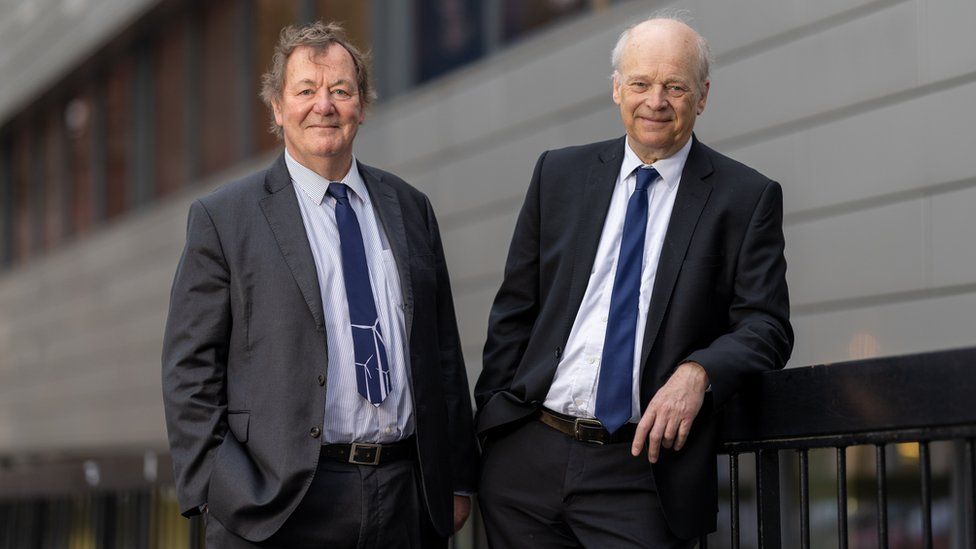
Mr Stiesdal and Mr Garrad began their wind journeys in the 1970s, both building “backyard” turbines.
The Dane was driven by concerns about energy costs arising from that decade’s oil shocks.
The Briton sought a practical use for his mathematical skills, following a PhD modelling water flow around fast-swimming dolphins.
Mr Stiesdal is associated with what became known as the “Danish concept”, setting the fundamental parameters for efficient and robust turbine design:
- three rotating blades mounted up-wind of a two-speed gearing and generator system
- a mechanism to control yaw, turning the whole set-up directly into the flow of air
“Of course, today’s turbines are much more advanced – but they still retain many of the early features,” Mr Stiesdal told BBC News.
“All the turbines in the world go clockwise when you look at them with the wind in your back, because that’s how the original Danish turbines worked.
“For a while, half went counterclockwise – but now, they all go clockwise because people recognised the success of the early designs.”
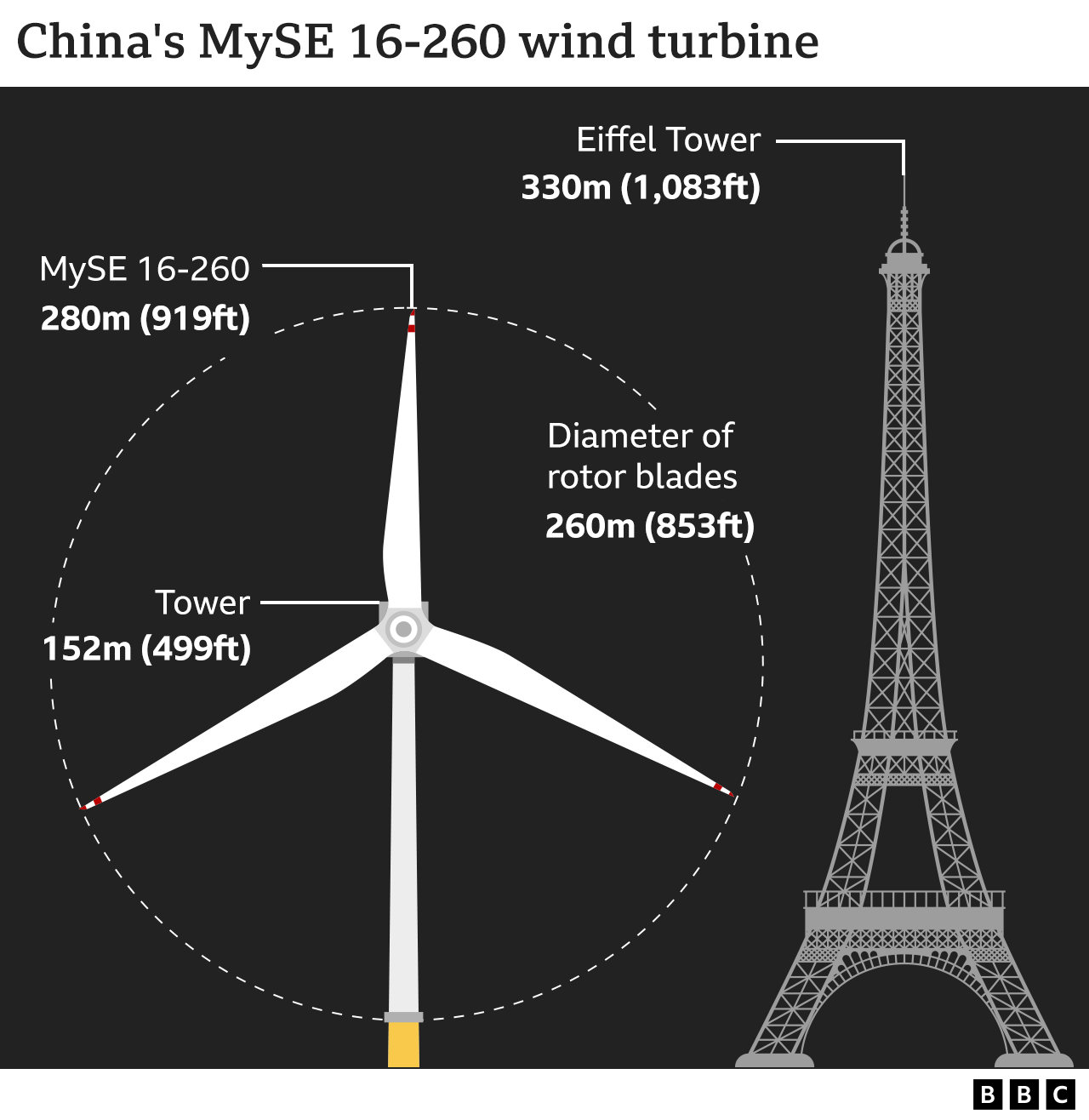
Mr Stiesdal licensed his concept to Vestas, working for them and introducing many innovations over a number of years, before moving to Bonus (later acquired by Siemens), where he managed the 1991 installation of the world’s first offshore wind farm, at Vindeby.
With 17m (56ft) blades, its turbine rotors could generate 450 kW, enough to power a couple of thousand Danish homes.
Now, after 30 years of technological improvement, blades over 120m can generate 16 MW, enough to power tens of thousands of homes.
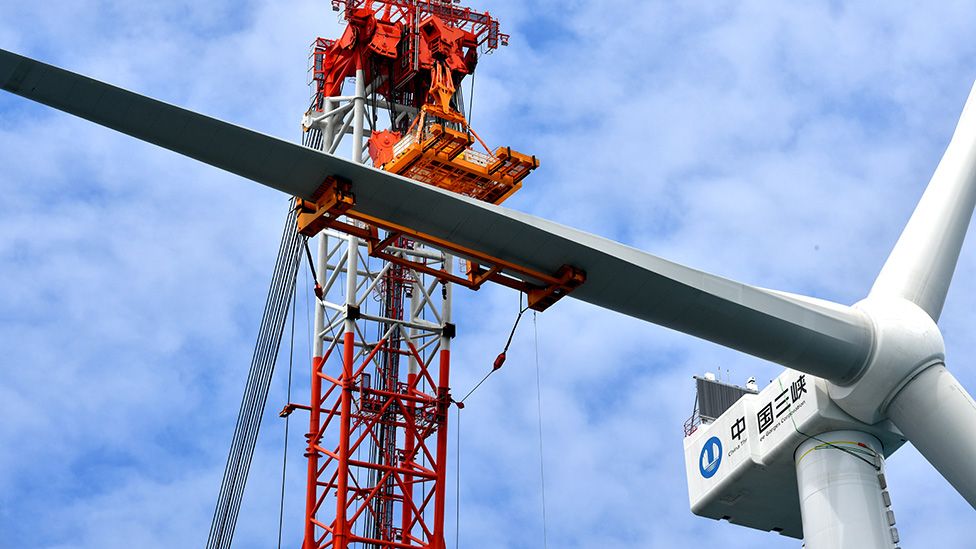
Mr Garrad developed the software to prove a new turbine design will work and how it will operate within an array.
As a consultant, he has also played a major part in de-risking the industry, enabling it to access the finance needed to expand at a rapid pace.
“Being the go-between between the engineering and the finance has been really important,” he said.
“We’ve touched pretty much every every turbine.
“About 70% of all turbines will have used our software in design.
“And for the 30% that didn’t, they probably came into contact with our software when they were being certified by a certification agent.”
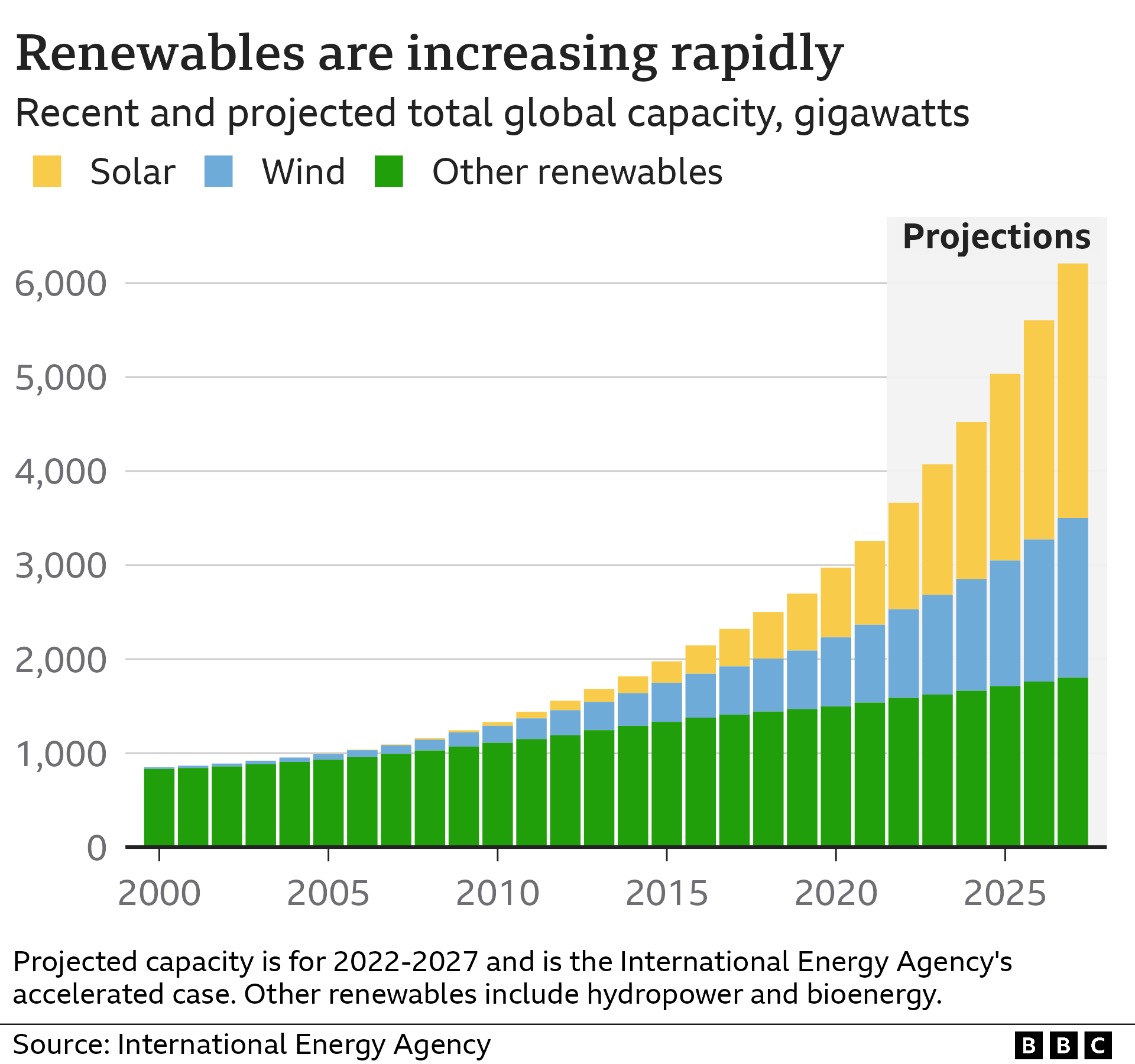
When Mr Stiesdal and Mr Garrad began their careers, wind energy was an insignificant component of the energy mix.
It took 40 years to achieve 1 TW of global installed capacity – but most commentators expect the next one to be installed before the end of the decade.
Already, more than 8% of electricity generation worldwide is wind – and in the UK, it is close to a third.
Further innovation in floating turbines will see farms go into much deeper waters.
And, in general, the rotating machines will become taller still.
Mr Stiesdal says no blade-tip should rise higher than the Eiffel Tower, 330m, however, and the industry should instead concentrate on cutting the unit cost of production even further.
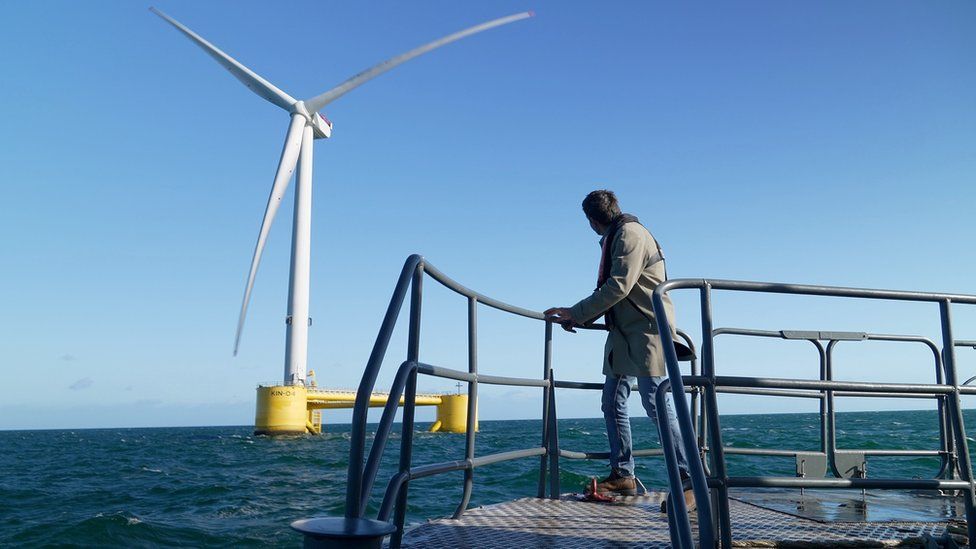
Lord Browne of Madingley, who chairs the Queen Elizabeth Prize for Engineering Foundation, said: “I remember even 15 years ago, people said, ‘Wind power, windmills – a ridiculous idea – they won’t work for the long term.’
“And, actually, there were plenty of very distinguished engineers who were very negative about wind power.
“But it’s been a remarkable journey, all thanks to these two evangelists, who made change happen.”
‘Encouraged others’
Prof Dame Lynn Gladden, who chairs the QEPrize judges, said the two men’s achievements could not be separated.
“I don’t think they could have got to where they got without each other’s contributions,” she told BBC News.
“These are the guys who laid the foundations for it all.
“The principles they developed, they shared and encouraged others to follow.
“If you removed one of them, you haven’t got the technology we have today – we wouldn’t be where we are now.”














25 comments
Rattling fantastic information can be found on web site.
I loved as much as you will receive carried out right here. The sketch is attractive, your authored material stylish. nonetheless, you command get bought an nervousness over that you wish be delivering the following. unwell unquestionably come further formerly again as exactly the same nearly very often inside case you shield this increase.
A powerful share, I just given this onto a colleague who was doing somewhat evaluation on this. And he the truth is purchased me breakfast because I discovered it for him.. smile. So let me reword that: Thnx for the deal with! But yeah Thnkx for spending the time to debate this, I really feel strongly about it and love studying more on this topic. If possible, as you become experience, would you thoughts updating your blog with extra particulars? It’s extremely helpful for me. Huge thumb up for this blog publish!
When I originally commented I clicked the “Notify me when new comments are added” checkbox and now each time a comment is added I get three e-mails with the same comment. Is there any way you can remove people from that service? Cheers!
I have been examinating out some of your stories and i can claim nice stuff. I will make sure to bookmark your blog.
Thank you for sharing excellent informations. Your site is very cool. I’m impressed by the details that you’ve on this blog. It reveals how nicely you understand this subject. Bookmarked this website page, will come back for extra articles. You, my pal, ROCK! I found simply the information I already searched everywhere and just could not come across. What an ideal website.
What i do not understood is in truth how you’re not actually a lot more neatly-favored than you may be now. You are very intelligent. You know therefore significantly when it comes to this subject, produced me personally consider it from so many varied angles. Its like women and men aren’t involved unless it¦s one thing to accomplish with Woman gaga! Your personal stuffs great. At all times handle it up!
Once I originally commented I clicked the -Notify me when new feedback are added- checkbox and now each time a comment is added I get 4 emails with the identical comment. Is there any method you may take away me from that service? Thanks!
I loved as much as you’ll receive carried out right here. The sketch is attractive, your authored subject matter stylish. nonetheless, you command get bought an edginess over that you wish be delivering the following. unwell unquestionably come more formerly again as exactly the same nearly a lot often inside case you shield this hike.
I don’t normally comment but I gotta say thankyou for the post on this amazing one : D.
What i do not realize is in fact how you are now not really much more smartly-preferred than you may be right now. You are so intelligent. You realize thus considerably in relation to this topic, produced me personally consider it from a lot of numerous angles. Its like women and men are not interested until it¦s something to accomplish with Girl gaga! Your individual stuffs outstanding. At all times deal with it up!
I like this post, enjoyed this one thankyou for posting.
Hiya, I am really glad I’ve found this info. Today bloggers publish only about gossips and web and this is actually frustrating. A good blog with interesting content, this is what I need. Thanks for keeping this site, I will be visiting it. Do you do newsletters? Can not find it.
This is the right blog for anyone who wants to find out about this topic. You realize so much its almost hard to argue with you (not that I actually would want…HaHa). You definitely put a new spin on a topic thats been written about for years. Great stuff, just great!
F*ckin’ awesome issues here. I am very glad to see your post. Thank you so much and i am looking forward to touch you. Will you kindly drop me a e-mail?
It is in point of fact a great and helpful piece of info. I¦m satisfied that you simply shared this helpful info with us. Please keep us up to date like this. Thanks for sharing.
Keep functioning ,impressive job!
I don’t normally comment but I gotta tell regards for the post on this perfect one : D.
Hey! Someone in my Myspace group shared this site with us so I came to take a look. I’m definitely loving the information. I’m bookmarking and will be tweeting this to my followers! Exceptional blog and amazing design and style.
After I initially commented I clicked the -Notify me when new comments are added- checkbox and now each time a comment is added I get 4 emails with the identical comment. Is there any approach you can take away me from that service? Thanks!
I appreciate, cause I found exactly what I was looking for. You have ended my four day long hunt! God Bless you man. Have a great day. Bye
I like this post, enjoyed this one thank you for putting up. “No trumpets sound when the important decisions of our life are made. Destiny is made known silently.” by Agnes de Mille.
I?¦ve been exploring for a little bit for any high-quality articles or blog posts in this kind of house . Exploring in Yahoo I finally stumbled upon this site. Reading this information So i?¦m satisfied to express that I have an incredibly just right uncanny feeling I found out just what I needed. I most indubitably will make certain to do not omit this web site and give it a look regularly.
Thank you for the sensible critique. Me and my neighbor were just preparing to do some research on this. We got a grab a book from our area library but I think I learned more clear from this post. I am very glad to see such magnificent info being shared freely out there.
I like this web site its a master peace ! Glad I discovered this on google .